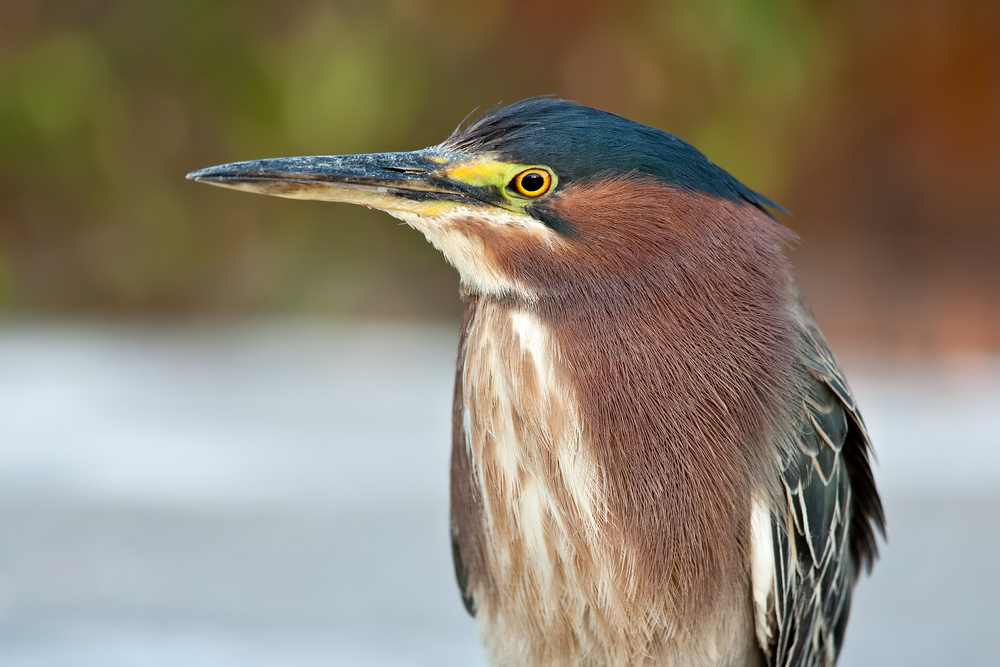Green Heron, Butorides virescens
Bill Rowe
For anyone who grew up in the midwestern countryside, summer may evoke the memory of a little Green Heron flying over the fields at sunset from one pond or creek to another—a regular sight nearly everywhere, as this species is probably our most widespread heron, besides being our second-smallest (next to the scarce and obscure Least Bittern). The larger species, like the Great Blue Heron and Great Egret, are hard to miss as they gather en masse in muddy wetland areas; the Green Heron, on the other hand, is more of a loner. It ignores these public assemblies and sticks to its private lake or stream, watching from a low branch or wading quietly and slowly through the vegetation, so as to catch small fish (its favorite prey), frogs, dragonfly adults and larvae, crickets, spiders, etc. Nests are built in trees and may or may not be right by the water; in fact, a nest in a suburban yard is not unheard of, as long as there is a wetland nearby. A first clue to the presence of Green Herons might be a loud, emphatic “skeow!” from somewhere along the shoreline, or a glimpse of a dark shape flying by with bright yellow-orange legs. A closer view will reveal handsome tones of bluish-green on the upperparts and dark chestnut on the neck and breast.
IDENTIFICATION: There is no other water bird very much like this one: it’s clearly a heron, with its long stout bill and longish legs, but only the size of a crow. Nearby, its colors are as described above. In flight, at a distance, it looks simply all dark and could actually be mistaken for a crow, except that, with a more careful look, its silhouette shows the pulled-in neck, trailing legs, and slightly bowed wings of a heron. Younger birds are similar to their parents but have broad streaks of chestnut and white on their necks.
ST. LOUIS STATUS: A common summer resident of wetlands, including even farm ponds and city park lakes that have enough vegetation to hide in. It arrives April-May and departs September-October for warmer wintering grounds, like Florida, the Gulf Coast, or Central America (where the species also lives year-round).
Learn more and listen to the calls of the Green Heron here.




